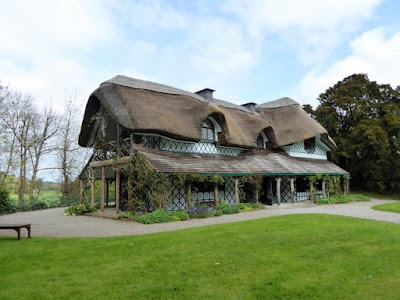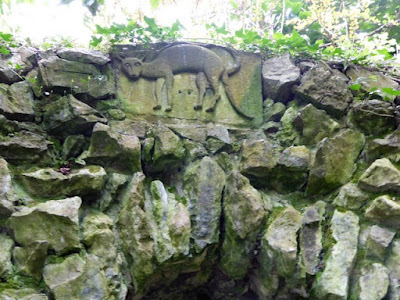 |
| Welcome to my Blog! Wander through worlds real and fictional, meet interesting people, visit exciting places and find good books to enjoy along the way! |
Book Title: The Husband Criteria
Series: The Lorings, Book #3
Author: Catherine Kullmann
Publication Date: 24 August 2023
Publisher: Willow Books
Page Length: 297
Genre: Historical Romance / Regency Romance
London 1817
The primary aim of every young lady embarking on the Spring frenzy that is the Season must be to make a good match. Or must it? And what is a good match? For cousins Cynthia, Chloe and Ann, well aware that the society preux chevalier may prove to be a domestic tyrant, these are vital questions. How can they discover their suitors’ true character when all their encounters must be confined to the highly ritualised round of balls, parties and drives in the park?
As they define and refine their Husband Criteria, Cynthia finds herself unwillingly attracted to aloof Rafe Marfield, heir to an earldom, while Chloe is pleased to find that Thomas Musgrave, the vicar’s son from home, is also in London. And Ann must decide what is more important to her, music or marriage.
And what of the gentlemen who consider the marriage mart to be their hunting grounds? How will they react if they realise how rigorously they are being assessed?
A light-hearted, entertaining look behind the scenes of a Season that takes a different course with unexpected consequences for all concerned.
Lord and Lady
Caher and their Swiss Cottage Orné
Returning from
Kerry to Dublin some years ago, we detoured to visit the Swiss Cottage in
Cahir, Co. Tipperary. I had always known of this Regency cottage orné or
ornamental cottage, but only then did I hear the fascinating story of the
builders of the cottage, Richard, 10th Lord Caher and his wife Emily.
On 10 June 1788,
Pierce Butler, 8th Baron Caher of the second creation, died in Paris without
male issue. He had succeeded his brother only two years previously and next in
line to inherit was their second cousin James. The impoverished James died a
month later in the East Indies, most likely unaware that he had come into a
peerage and a sizeable estate while his wife, daughter and twelve-year old son
lived in abject poverty in Ireland.
Other family
members got wind of Pierce’s death and, as graphically recounted by Dorothea
Herbert in her Retrospections, these Expectants ………..had them [the
children] kidnapt and Secretly convey’d to France where they were reared in
miserable poverty, presumably in the hope that in the absence of the
rightful heir, these others would be able to draw on the estate's funds. Enter
a Dea ex Machina in the person of one Mrs Jefferies who heard the story
at an inn in Cahir. She appealed to her brother, the Lord Chancellor for
Ireland, on behalf on the distraught mother. His lordship procured Warrants
for bringing the children over and Mrs Jefferies went herself to France,
where her daughter was in a convent. She managed to track down the missing
children and assumed their guardianship.
In an obituary in
1815, The Gentleman’s Magazine describes her as a lady of strong
natural endowments, of an enterprising and indefatigable spirit. This was
manifested in the zeal with which she travelled through France in search of the
present Lord Cahir, whom she restored to his titles and estates on the death of
Pearce, the late Lord in the year 1788. His Lordship was then in his
thirteenth year; and in five years afterwards Mrs Jeffries [sic] had the
pleasure of uniting him to her youngest daughter Miss Emily Jeffries, the
present Lady Cahir. According to Dorothea Herbert, The Chancellor…
threatened to imprison his Sister and Niece for inveigling the young Heir but
apparently Mr Jefferies was able to save his wife and daughter from this fate.
The young couple
returned to Ireland where they played a prominent part in the social life of
the day. Dorothea describes a most flaming Fête Champêtre at Caher
at which she danced with his Lordship and Lady Caher danced an Irish jig in
her Stockings to the Musick of an old, blind piper.
Not content with
the ancestral home of Cahir Castle, an imposing medieval structure on a rocky
island in the River Suir in the middle of Cahir town, and the more modern Cahir
House, built in the 1770s some one hundred and sixty metres away from the
castle, Lord and Lady Caher decided they needed somewhere they could spend time
in rustic simplicity. They chose a site about two kilometres from the Castle,
above the River Suir and surrounded by wooded slopes. In order to ensure the
necessary solitude, they first had the land cleared of existing buildings,
including an old Quaker residence. Now, beside a yew (seen on the right of the picture
below) that was at least eight hundred years old, they had the perfect spot for
their ornamental cottage.
Such picturesque
rural retreats were highly popular in Ireland and England at the turn of the
nineteenth century. Drawing both on the French ferme-ornée and the new
taste for the picturesque and wild in nature for inspiration, they offered a
retreat from civilisation and an opportunity to savour the joys of nature. The
Cahers’s cottage, now known as the Swiss Cottage, the nickname given to it by
the locals, is one of the best surviving examples of a cottage orné.
Traditionally, the design is ascribed to John Nash, of Royal Pavilion in
Brighton fame but, although he was working in Ireland at the time when it was
built, there is nothing to confirm his involvement with the project.
Deliberately asymmetrical
and artfully unpolished, the cottage seems to have ‘growed’ like Topsy over
decades if not centuries, becoming one with the landscape. It has two stories,
each with two rooms, linked by a central hall with a wooden spiral staircase.
On the ground floor, French doors open onto the veranda that runs all around
the house while upstairs, the two bedrooms open onto balconies. All the rooms
are light and airy. The thatched roof is a fascinating mixture of steep slopes
and swooping, rounded eaves. Balcony and veranda supports are made from natural
tree-trunks and wreathed by climbing plants.
By the 1980s, the
cottage was completely dilapidated. It was taken over by the Office of Public
Works, and with the very generous support of the Port Royal foundation, a
complete restoration was undertaken between 1985 and 1989. Very little remained
of the original decoration and furnishings. Among the survivors were enough of
two Dufour wallpapers, Monuments de Paris and Rives du Bosphore or
Banks of the Bosporus, a charming panorama of Turkish men and women set
against a backdrop of minarets, onion domes and pointed arches, that it was
possible to have them restored and the missing sections copied.
According to our guide, the Cahers never stayed overnight, but used the cottage as a daytime retreat, returning to Caher House to sleep. The idealised peasant existence required invisible helping hands. Visitors today approach the cottage via a flight of stone steps that leads to a door set under a rough stone arch that is crowned by a sculpture of a strange two-tailed animal.
The door opens on to a tunnel that ends in the basement of the building at what is now the reception for visitors. This was the servants’ entrance and here were the kitchen and other offices, out-of-sight but linked by the back stairs to the ground floor where a jib door leads into the hall proper.
© Catherine Kullmann 2023
Buy Links:
Universal Link: https://mybook.to/criteria
Amazon UK:
https://www.amazon.co.uk/dp/B0CBKZCBVX
Amazon US:
https://www.amazon.com/dp/B0CBKZCBVX
Amazon CA:
https://www.amazon.ca/dp/B0CBKZCBVX
Amazon AU:
Website:
http://www.catherinekullmann.com
Twitter:
https://twitter.com/CKullmannAuthor
Facebook:
https://www.facebook.com/catherinekullmannauthor
Book Bub:
https://www.bookbub.com/authors/catherine-kullmann
Amazon Author Page: http://viewauthor.at/ckullmannamazonpage
Goodreads:
https://www.goodreads.com/author/show/15549457.Catherine_Kullmann
Twitter Handle: @CKullmmannauthor @cathiedunn
Instagram Handle: @thecoffeepotbookclub
Hashtags: #RegencyRomance #BlogTour #TheCoffeePotBookClub
Tour Schedule Link:
You might also like
books written by Helen Hollick
Website: https://helenhollick.net/
Amazon Author Page: https://viewauthor.at/HelenHollick
 |
THE PENDRAGON's BANNER TRILOGY New Editions available worldwide (except USA/Canada) |
 |
Available USA/Canada |
 |
| Amazon: FREE ebook! |
 |
| Have you ever thought of saying 'thank you'? https://thecoffeepotbookclub.blogspot.com/2023/08/summertime-history-say-thank-you.html?fbclid=IwAR0aS4fWJXlQ70RLhyopReb1dIu5n-aL80R9q7w8MelmC_28mnBdMdttKNY |














.jpg)
Thanks so much for hosting Catherine Kullmann with such a fascinating post, Helen. Much appreciated.
ReplyDeleteCathie xx
The Coffee Pot Book Club
my pleasure
Delete